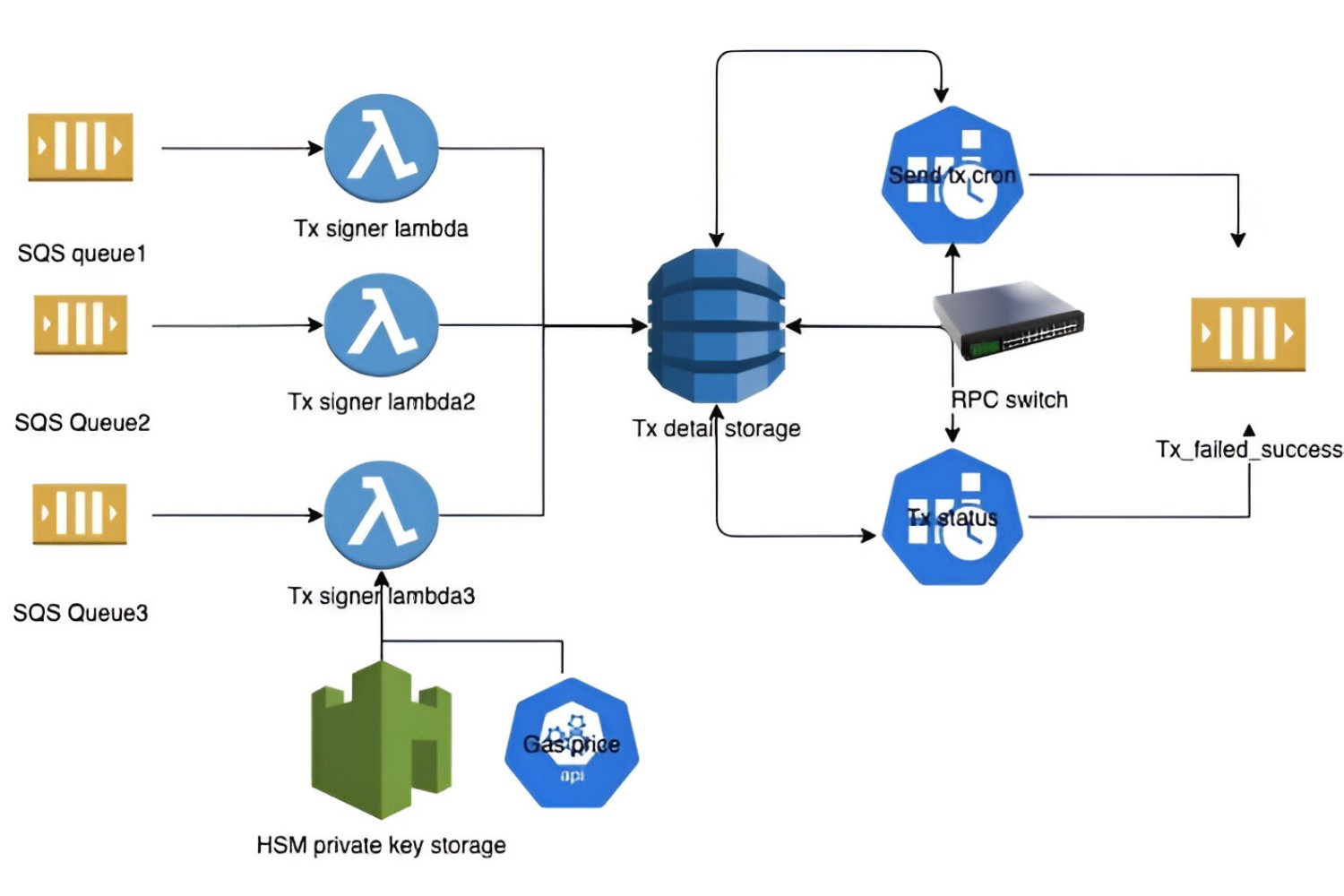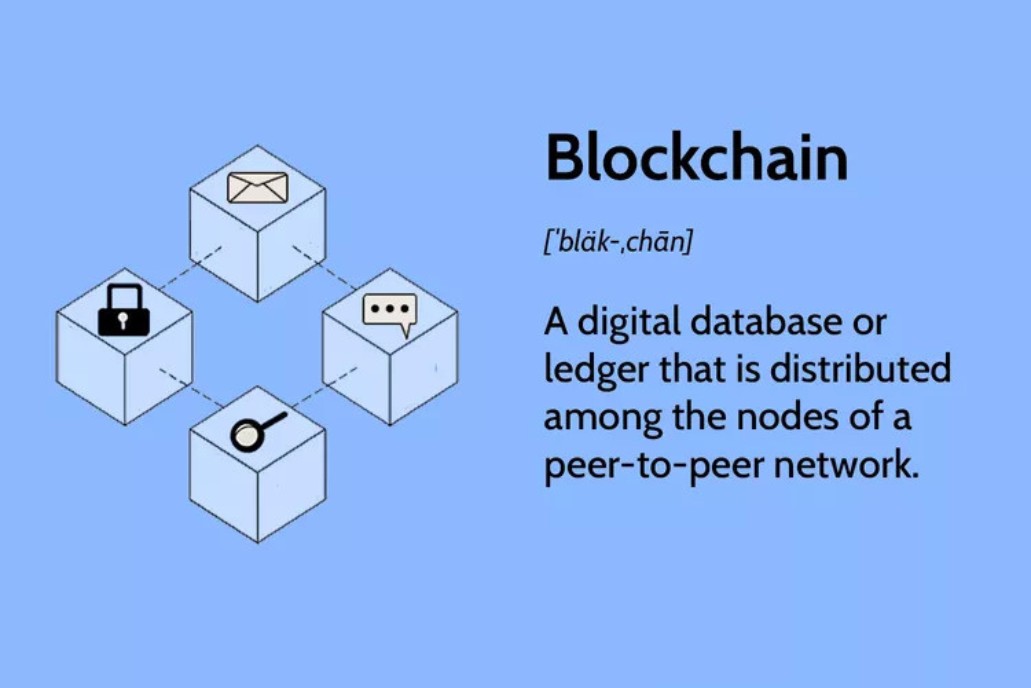Introduction
Welcome to the world of blockchain technology! As you delve into the fascinating realm of cryptocurrencies and decentralized networks, you might come across the term “nonce.” In the context of blockchain, nonce plays a crucial role in maintaining the integrity and security of data. From Bitcoin to Ethereum and other blockchain-based systems, the nonce serves as a key component in the underlying protocols.
But what exactly is a nonce, and what purpose does it serve in blockchain technology? In this article, we will explore the concept of nonce, its significance, and how it is utilized in various blockchain implementations.
Blockchain, at its core, is a decentralized ledger that records and verifies transactions in a transparent and secure manner. Each block in the chain contains a unique set of data, including a reference to the previous block and a nonce value.
The nonce, short for “number only used once,” is a randomly generated value that is added to a block during the mining process. Its primary function is to ensure that the block’s hash falls within a predefined range and meets certain conditions.
The concept of the nonce is closely tied to the concept of proof of work, which is a consensus mechanism used by many blockchain networks. In a proof of work system, miners compete to find a special nonce value that, when combined with the block’s data, results in a hash that meets specific criteria.
By requiring miners to find a nonce value that produces a hash with certain properties, blockchain networks ensure that the creation of new blocks is a resource-intensive process. This mechanism helps to prevent malicious actors from easily manipulating the blockchain and ensures that the network remains secure and resistant to attacks.
In the following sections, we will dive deeper into the role of the nonce in blockchain technology, how it is used, and its importance in maintaining the security and integrity of the blockchain.
Definition of the Nonce
Before we delve into the significance of the nonce in blockchain, let’s start by defining what exactly a nonce is. The term “nonce” stands for “number only used once.” It is a randomly generated value that is added to a data block during the mining process in blockchain technology.
The nonce serves as a piece of arbitrary and unique data that miners must include in their blocks when attempting to solve the proof of work algorithm. This value is crucial in ensuring that the resulting hash of the block meets specific criteria and falls within a specific range.
Essentially, the nonce is a variable that miners can adjust as they repeatedly calculate a hash function on the block’s data. By modifying the nonce, miners aim to find a hash value that satisfies certain conditions predetermined by the blockchain’s consensus mechanism.
It is important to note that the nonce is different from the block’s data and other essential components like the timestamp and previous block hash. While these elements remain unchanged, miners can freely adjust the nonce value to iteratively hash the block until they find a suitable hash that meets the required criteria.
The nonce is typically a 32-bit or 64-bit value, depending on the specific blockchain network. As it is randomly generated, miners can test different nonce values until they find one that, when combined with the rest of the block’s data, produces a hash with specific properties.
Once a miner discovers a nonce value that satisfies the predefined criteria, they include it in the block and broadcast it to the network. This successful mining process allows the miner to propose the new block to the blockchain and receive a reward for their efforts.
By requiring miners to find a nonce value to meet certain conditions, blockchain networks ensure that the process of creating new blocks is resource-intensive. This mechanism, known as proof of work, plays a crucial role in maintaining the security and stability of the blockchain.
In the next section, we will explore how the nonce is used in the mining process and understand its role in the broader concept of proof of work in blockchain technology.
The Role of the Nonce in Blockchain
The nonce plays a vital role in the mining process and the overall functioning of blockchain technology. It serves as a critical component in the consensus mechanism, specifically in the proof of work algorithm, which ensures the security and immutability of the blockchain.
One of the main purposes of the nonce is to make the creation of new blocks in the blockchain a computationally difficult task. Miners must find a specific nonce value that, when concatenated with the block’s data, produces a hash that meets certain predefined criteria.
The criteria for a valid hash can vary depending on the blockchain network and its specific protocol rules. For example, it may require the hash to have a certain number of leading zeros or fall within a certain range. The precise criteria are determined by the difficulty level set by the network, which adjusts periodically to maintain a consistent block creation rate.
Miners must iterate through different nonce values, repeatedly applying the hash function to the combined block data and the nonce, until they find a hash that satisfies the criteria. This process requires significant computational power and energy consumption.
By making the mining process resource-intensive, the nonce and proof of work mechanism help ensure the integrity and security of the blockchain. As miners compete to find the nonce value, they contribute to the decentralized consensus and help determine the order in which transactions are added to the blockchain.
Furthermore, the nonce also ensures that each block in the blockchain is unique. Even if the transactions and other data within a block are the same, a different nonce value will result in a different hash. This uniqueness is vital for maintaining the immutability of the blockchain and preventing any potential tampering or alteration of previously added blocks.
Overall, the nonce serves as a crucial element in the consensus mechanism of blockchain technology, contributing to the decentralization, security, and immutability of the network. Through the use of proof of work and the requirement to find a suitable nonce value, blockchain systems can create a trustless and transparent environment for secure and reliable transaction validation.
How the Nonce is Used
The nonce plays a fundamental role in the mining process of blockchain technology. It is used as a variable that miners must manipulate to find a hash that meets specific criteria set by the blockchain protocol.
To understand how the nonce is used, let’s take a closer look at the steps involved in the mining process:
- Block Creation: Miners gather a group of pending transactions and other relevant data, such as the previous block’s hash and the timestamp, to form a new block.
- Nonce Generation: Miners select a nonce value, typically a 32-bit or 64-bit integer, and append it to the block’s data.
- Hash Calculation: Miners combine the block’s data, including the nonce, and apply a hash function, such as SHA-256, to generate a hash value.
- Hash Comparison: The generated hash is compared against the predefined criteria set by the blockchain network. If the hash value falls within the required range or satisfies other conditions, the mining process is considered successful.
- Adjustment and Iteration: If the generated hash does not meet the criteria, miners must adjust the nonce value and repeat the hash calculation until they find an acceptable hash.
- Block Validation: Once a miner discovers a nonce that produces a suitable hash, they broadcast the block to the network for validation. Other nodes in the network verify the nonce and perform additional checks to ensure the block’s integrity.
- Reward and Block Addition: If the majority of the nodes accept the block as valid, it is added to the blockchain, and the miner is rewarded with cryptocurrency tokens or transaction fees.
Miners utilize computational resources to iterate through nonce values and calculate hashes repeatedly to find a nonce that meets the required criteria. The process requires a significant amount of computational power, making it challenging and resource-intensive.
The nonce serves as a way for miners to adjust and manipulate the block’s data without altering the underlying transactions or other essential information. By modifying the nonce, miners can iterate through different possible combinations of the block’s data, aiming to find a hash with the desired properties.
In essence, the nonce is a crucial element that enables miners to prove their work and contribute to the consensus of the blockchain network. It ensures that the mining process is demanding enough to deter malicious actors while maintaining the security and integrity of the blockchain.
Nonce and Proof of Work
The concept of nonce is closely tied to the consensus mechanism known as proof of work (PoW). Proof of work is a fundamental component of many blockchain networks, including Bitcoin and Ethereum, and the nonce plays a crucial role in its implementation.
In a proof of work system, miners compete to find a nonce value that, when combined with the block’s data, results in a hash value that meets certain criteria. This criteria can be a specific number of leading zeros in the hash or falling within a specific range.
The inclusion of the nonce in the proof of work algorithm serves multiple purposes:
- Difficulty Adjustment: The nonce allows the blockchain network to adjust the difficulty of the proof of work algorithm. By increasing or decreasing the criteria for a valid hash, the network can control the rate at which new blocks are added to the blockchain.
- Resource Intensiveness: The nonce requirement ensures that the mining process is computationally intensive. Miners must expend significant computational resources, such as processing power and energy, to find the suitable nonce value, deterring malicious actors from easily manipulating the blockchain.
- Decentralization: The requirement to find a nonce value introduces an element of randomness to the mining process. This randomness helps distribute the mining power across the network, preventing any single entity from monopolizing the blockchain and maintaining a decentralized ecosystem.
- Secure Consensus: With proof of work, consensus is achieved when the majority of miners validate a block by accepting the found nonce and hash as meeting the required criteria. This consensus ensures the integrity and trustworthiness of the blockchain.
The nonce, therefore, plays a crucial role in the proof of work mechanism by enabling miners to prove their computational work and contribute to the consensus of the blockchain. It serves as a tool that ensures the security, decentralization, and immutability of the network.
It’s worth noting that the use of nonce and proof of work is not the only consensus mechanism employed in blockchain technology. Different networks may utilize different algorithms, such as proof of stake or delegated proof of stake, which have their own unique mechanisms for achieving consensus.
In the next section, we will explore the importance of nonce in ensuring the security of the blockchain and protecting it from potential attacks.
Importance of the Nonce in Blockchain Security
The nonce plays a significant role in maintaining the security of the blockchain. Its inclusion in the mining process and proof of work algorithm helps to protect the integrity and immutability of the system. Here are some of the key reasons why the nonce is crucial for blockchain security:
- Preventing Manipulation: The nonce requirement ensures that the creation of new blocks in the blockchain is a computationally challenging task. Miners must find a nonce value that, when combined with the block’s data, produces a hash with specific properties. This process prevents malicious actors from easily altering the blockchain’s content, as any changes to the block’s data or nonce would result in a drastically different hash value.
- Securing Consensus: The nonce and proof of work mechanism provide a way for miners to prove their computational work and contribute to the consensus of the blockchain network. By finding a suitable nonce value, miners validate the block and help verify its integrity. This distributed consensus ensures that the majority of the network participants agree on the validity of the blockchain, making it resistant to attacks and tampering.
- Preventing Double Spending: The nonce plays a crucial role in preventing double spending, a type of attack where a user tries to spend the same cryptocurrency units more than once. In a blockchain system, each transaction is included in a specific block and assigned a unique nonce value. This ensures that once a transaction is confirmed and added to the blockchain, it cannot be altered or duplicated. The nonce acts as a timestamp for the transaction, making it impossible for someone to use the same transaction details with a different nonce.
- Maintaining Network Consistency: The nonce and proof of work mechanism help maintain the consistency of the blockchain network. By requiring miners to find a suitable nonce value, the network ensures that all participants agree on the order of transactions and the validity of blocks. This agreement helps prevent forks in the blockchain and ensures that all nodes have a consistent view of the network’s state.
The inclusion of the nonce in the mining process significantly enhances the security and robustness of the blockchain. By making the creation of new blocks resource-intensive and mathematically challenging, the nonce ensures that the network remains resistant to various attacks, such as double spending, tampering, and Sybil attacks.
Overall, the nonce is a critical component of blockchain security. It helps protect the integrity of the system, maintain consensus, prevent malicious activity, and ensure the trustworthiness and immutability of the blockchain network.
Examples of Nonce in Blockchain Technology
To better understand how the nonce is used in blockchain technology, let’s explore a few examples from prominent blockchain networks:
- Bitcoin: In the Bitcoin network, miners participate in a competition to find a suitable nonce value that, when combined with the block’s data, results in a hash with a certain number of leading zeros. This requirement makes the mining process resource-intensive and ensures that new blocks are added to the blockchain at a controlled rate. Miners continuously adjust the nonce and calculate the hash until they find a valid solution, at which point they can propose a new block and receive a reward.
- Ethereum: Ethereum also utilizes a proof of work consensus mechanism, similar to Bitcoin. However, Ethereum uses a different hashing algorithm called Ethash. Miners in the Ethereum network need to find a nonce value that, when combined with the block’s data, produces a hash that meets certain criteria set by the network. The nonce plays a crucial role in the mining process, ensuring the security and integrity of the Ethereum blockchain.
- Zcash: Zcash is a privacy-focused cryptocurrency that uses a proof of work algorithm called Equihash. In the Equihash algorithm, miners must find a nonce value that, when combined with the block data, results in a hash with a certain pattern. This pattern is defined as a set of indices where the hash value has specific values. The nonce enables miners to iterate through possible combinations until they find a suitable hash that meets the Equihash requirements.
- Litecoin: Litecoin is often referred to as the silver to Bitcoin’s gold and shares many similarities with its larger counterpart. In the Litecoin network, miners also utilize a proof of work algorithm, specifically Scrypt. Like other proof of work systems, Litecoin miners manipulate the nonce value to find a hash that meets a predefined criteria, such as a certain number of leading zeros.
These examples demonstrate how the nonce is an integral part of the mining process in various blockchain networks. It serves as a variable that miners adjust and iterate through to find a suitable hash that meets the specific requirements set by the network’s consensus mechanism.
These networks, among many others, rely on the nonce to ensure the security, decentralization, and immutability of their blockchains. The nonce’s use in these examples showcases its essential role in enabling miners to generate valid blocks and contribute to the overall integrity of the blockchain network.
Conclusion
The nonce is a crucial element in blockchain technology, serving as a random and unique value that miners manipulate during the mining process. Through the proof of work algorithm, the inclusion of the nonce ensures the security, integrity, and immutability of the blockchain.
By requiring miners to find a nonce value that produces a hash with specific properties, blockchain networks make the creation of new blocks computationally intensive. This resource-intensive process deters malicious actors, prevents tampering, and maintains the decentralization of the network.
The nonce plays a vital role in achieving consensus among network participants, ensuring that the majority agrees on the validity of new blocks. It prevents double spending attacks, maintains the consistency of the blockchain, and enhances the trustworthiness of the system.
From Bitcoin to Ethereum, Litecoin to Zcash, the nonce is utilized in various blockchain networks to secure transactions, validate blocks, and maintain the overall integrity of the decentralized ledger. It showcases the power of cryptographic puzzles and computational work to create a trustless and tamper-proof environment.
As blockchain technology continues to evolve and new consensus mechanisms emerge, the role of the nonce may evolve as well. However, its importance in ensuring the security and reliability of blockchain networks remains steadfast.
Understanding the significance of the nonce in blockchain technology is crucial for anyone navigating the world of cryptocurrencies and decentralized systems. It demonstrates the innovative solutions used to overcome trust issues and establish a transparent and secure digital ledger.
As blockchain technology continues to revolutionize industries and shape the future of finance, commerce, and beyond, we can appreciate the essential role that the nonce plays in creating a robust and trustworthy foundation for this transformative technology.

























